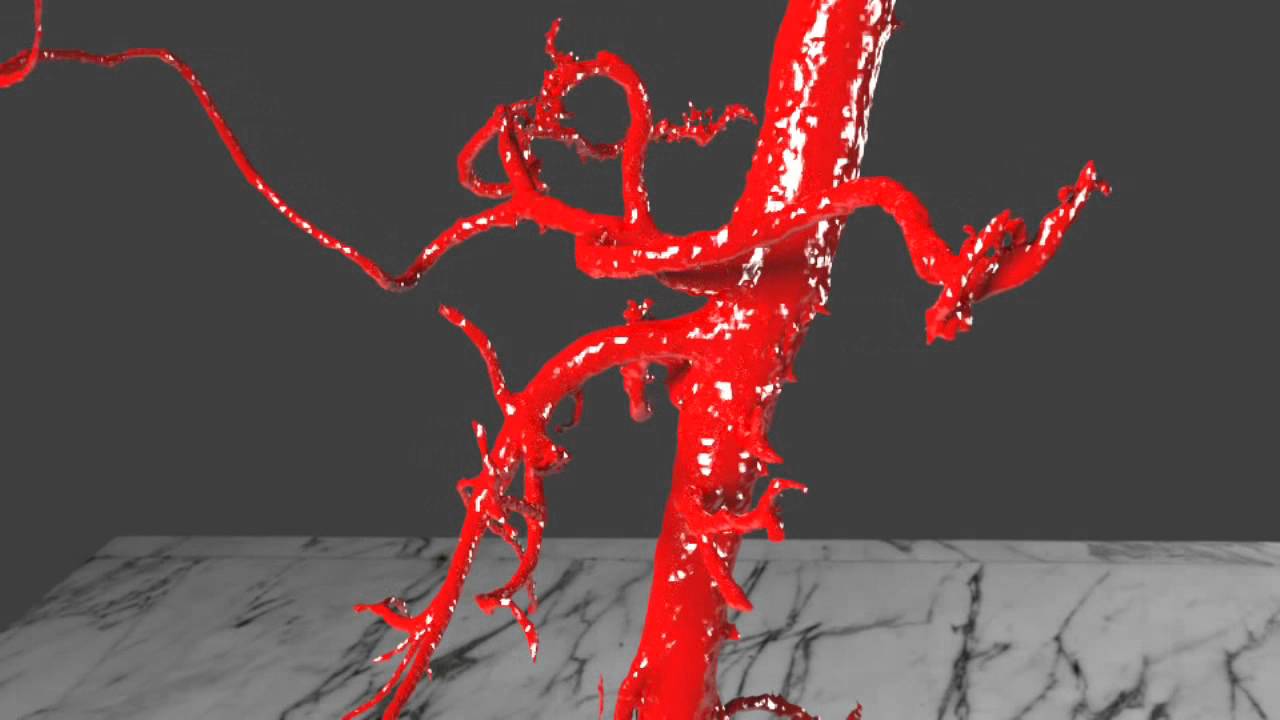
When it comes to the human body, there are numerous fascinating components that play crucial roles in ensuring optimal functioning. One such component is the celiac trunk, also known as the celiac artery. The celiac trunk is a major branch of the abdominal aorta and supplies blood to various vital organs in the abdominal cavity, including the stomach, liver, spleen, and parts of the small intestine.
In this article, we will explore 14 astounding facts about the celiac trunk. From its anatomy and function to common medical conditions associated with it, we will dive deep into understanding this remarkable network of arteries. So, join us as we embark on a journey of discovery through the intricacies of the celiac trunk and uncover the incredible secrets it holds.
Key Takeaways:
- The Celiac Trunk is a vital artery that supplies blood to the stomach, liver, spleen, and pancreas, playing a crucial role in maintaining the health of these organs.
- Blockages or damage to the Celiac Trunk can lead to severe abdominal pain and life-threatening consequences, emphasizing the importance of early detection and timely management of related disorders.
The Celiac Trunk is a Vital Arterial Branch in the Human Body
The Celiac Trunk, also known as the Celiac Artery, is a major blood vessel that arises from the abdominal aorta, a crucial artery that supplies oxygenated blood to various organs in the abdomen. This arterial branch plays a vital role in delivering blood to the upper part of the digestive system and other abdominal organs.
The Celiac Trunk Originates from the Abdominal Aorta
The Celiac Trunk is formed by the first major anterior branch of the abdominal aorta, just below the diaphragm. It typically arises as a single vessel, giving rise to three main branches that supply blood to different organs.
The Celiac Trunk Supplies Blood to the Stomach
One of the primary functions of the Celiac Trunk is to provide oxygenated blood to the stomach. Its gastric branch supplies multiple arteries that ensure an adequate blood supply to this vital digestive organ.
The Celiac Trunk Provides Blood to the Liver
The Celiac Trunk gives rise to the hepatic artery, which is responsible for supplying oxygenated blood to the liver. The liver plays a crucial role in various metabolic processes and relies on a rich blood supply for its proper functioning.
The Celiac Trunk Also Supplies Blood to the Spleen
In addition to the stomach and liver, the Celiac Trunk gives off the splenic artery, which is responsible for delivering blood to the spleen. The spleen, situated in the upper left abdomen, is an important organ involved in immune function and blood filtration.
The Celiac Trunk Branches into the Left Gastric Artery
One of the branches of the Celiac Trunk is the left gastric artery, which supplies blood to the lesser curvature of the stomach. This arterial branch plays a crucial role in maintaining the blood flow to this specific region of the stomach.
The Celiac Trunk Gives Rise to the Splenic Artery
Another significant branch of the Celiac Trunk is the splenic artery. This artery follows a tortuous course and supplies blood to the spleen, pancreas, and other abdominal structures in that region.
The Celiac Trunk Provides Blood to the Pancreas
Along with the splenic artery, the Celiac Trunk gives off another branch called the common hepatic artery. This branch then further divides into the proper hepatic artery and the gastroduodenal artery, which supply blood to the liver, gallbladder, and pancreas.
The Celiac Trunk Is a Short Arterial Branch
Despite its significance in supplying blood to multiple vital organs, the Celiac Trunk is relatively short in length compared to other major arteries. Its short course ensures efficient blood flow and distribution to the designated organs in the abdomen.
The Celiac Trunk Originates Near the Origin of Superior Mesenteric Artery
The Celiac Trunk arises just below the diaphragm and slightly above the origin of the Superior Mesenteric Artery. These two major arteries approximately share the same starting point but diverge to supply blood to different abdominal organs.
The Celiac Trunk Can Be Affected by Various Diseases
Like any other blood vessel, the Celiac Trunk can be affected by various diseases, including atherosclerosis. When plaque builds up inside the artery, it can lead to reduced blood flow and potentially severe complications.
Blockages in the Celiac Trunk Can Cause Severe Abdominal Pain
If a blockage occurs in the Celiac Trunk due to a blood clot or plaque, it can result in a condition known as Celiac Trunk stenosis. This obstruction can cause severe abdominal pain, especially after eating, as the affected organs struggle to receive an adequate blood supply.
Damage to the Celiac Trunk Can Be Life-Threatening
If the Celiac Trunk is severely damaged or ruptured, it can lead to life-threatening consequences. Due to its crucial role in supplying blood to vital organs, any injury or trauma to this arterial branch requires immediate medical attention.
The Celiac Trunk is Essential for Abdominal Organ Functioning
The Celiac Trunk plays a pivotal role in ensuring proper functioning of various abdominal organs, including the stomach, liver, spleen, and pancreas. Its branches deliver oxygen-rich blood, supporting the metabolic processes and overall health of these organs.
In conclusion, the 14 astounding facts about the Celiac Trunk highlight the crucial role this arterial branch plays in supplying blood to the upper part of the digestive system and various abdominal organs. Understanding its importance and potential complications can help in early detection and timely management of related disorders, contributing to better overall health.
Conclusion
In conclusion, the celiac trunk, also known as the celiac artery, is a vital blood vessel that supplies blood to the upper abdominal organs. It plays a crucial role in maintaining the proper functioning of organs such as the stomach, liver, spleen, and pancreas. Understanding the anatomy and function of the celiac trunk can help in diagnosing and treating various medical conditions, such as celiac disease and abdominal aortic aneurysm.The celiac trunk is a complex network of arteries that branches off from the abdominal aorta. It provides essential oxygenated blood and nutrients to the organs it supplies, ensuring their proper functioning. It is crucial to take care of the celiac trunk and maintain a healthy lifestyle to prevent any complications or disorders related to this artery.As advancements in medical research continue, further exploration of the celiac trunk and its role in various diseases will contribute to improved diagnosis and treatment options. By understanding the astounding facts about the celiac trunk, we gain valuable insights into the intricate workings of the human body and can take proactive measures to maintain our well-being.
FAQs
Q: What is the celiac trunk?
A: The celiac trunk, also known as the celiac artery, is a major blood vessel that supplies oxygenated blood to the upper abdominal organs, including the stomach, liver, spleen, and pancreas.
Q: What is the function of the celiac trunk?
A: The main function of the celiac trunk is to ensure the proper blood supply to the upper abdominal organs, providing them with vital nutrients and oxygen for their optimal functioning.
Q: What are some common disorders related to the celiac trunk?
A: Some common disorders related to the celiac trunk include celiac disease, abdominal aortic aneurysm, and celiac artery compression syndrome.
Q: How can I take care of my celiac trunk?
A: Taking care of your celiac trunk involves maintaining a healthy lifestyle, including a balanced diet, regular exercise, avoiding smoking and excessive alcohol consumption, and managing any underlying medical conditions.
Q: Can the celiac trunk be affected by diseases?
A: Yes, the celiac trunk can be affected by various diseases, such as atherosclerosis, which can lead to the narrowing or blockage of the artery, and celiac artery compression syndrome, which occurs when nearby structures compress the celiac trunk, compromising its blood flow.
Exploring the intricacies of the human body, from the brain's vascular system to the liver's lifeline, the hepatic artery, is a fascinating journey. Uncover surprising facts about the splenic artery, which plays a crucial role in maintaining the spleen's health. Each part of our anatomy holds its own unique wonders, waiting to be discovered.
Was this page helpful?
Our commitment to delivering trustworthy and engaging content is at the heart of what we do. Each fact on our site is contributed by real users like you, bringing a wealth of diverse insights and information. To ensure the highest standards of accuracy and reliability, our dedicated editors meticulously review each submission. This process guarantees that the facts we share are not only fascinating but also credible. Trust in our commitment to quality and authenticity as you explore and learn with us.


